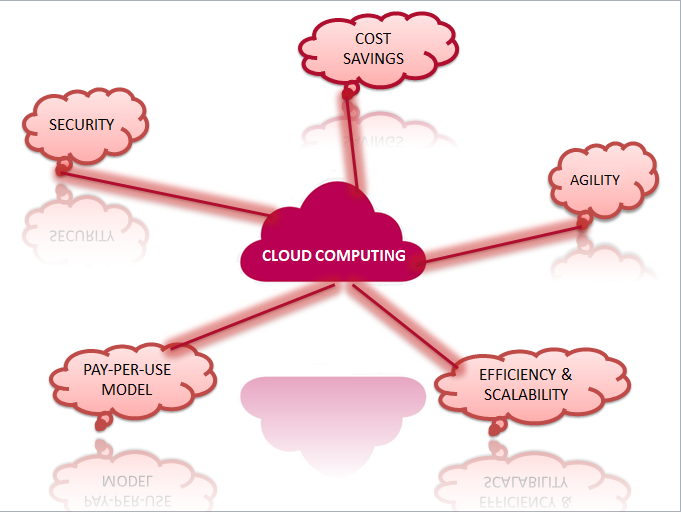Cloud computing and digital business model are two terms that have taken the global IT business by storm as demand for digital transformation and cloud services touches the skies.
Against this backdrop, the soaring adoption rate of cloud computing technology is proof that cloud is not the future, but the present. With the comprehensive range of services available and the level of performance it promises to deliver, cloud computing is capable of reshaping the IT horizons for any organization.
Cloud computing allows the deployment of new innovative applications rapidly, offering the benefits of low costs and high speed, thus making it a key enabler for new digital business models.
The State of Digital Business
Digitization has deeply influenced businesses in today’s world. Every type of business in every type of industry is in a disruption phase, attempting to transform into companies that can compete in this new digital environment.
Good examples of digitization can be found in the entertainment, fast food, and retail sectors. Indeed, digitization is the reason why some brands like Amazon, Walmart, and Netflix are flourishing in their business.
“Becoming a digital business means employing information technology to manage operations and drive a digital customer experience, as well as developing and delivering new products and services on a platform-based methodology” – Chander Damodaran from Brillio
Despite the fact that there is a shortage of skilled internal IT expertise, many mid-sized companies who want to digitize their existing business models are still fearful of outsourcing key parts of their IT work. If these companies do not employ or cooperate with the right IT experts and build upon the benefits on cloud technology, they might lose markets to their competitors.
Cloud enables organizations to perform complex tasks with ease by combining different components to create useful applications, making it the ideal platform to leverage the benefits of digital transformation.

As depicted above, the benefits that are communicated by cloud computing service providers are the capacity to deliver agility, process optimization, speed (time to market), and cost savings. However, this should be viewed only as a promise and must be checked on a specific customer case-by-case basis before implementation, with regular check ups continuing after its adoption.
How to Adopt Cloud Services for Specific Digital Transformation Needs
Obtaining the true benefits of a cloud-based implementation requires the user to truly understand their own needs in order to match with realistic options that specific could services can provide.
Before we address this, it’s important to know that cloud computing services are categorized in three groups: Infrastructure as a Service (IaaS), Platform as a Service (PaaS), or Software as a Service (SaaS).
There are four fundamental steps that make up the roadmap towards Cloud adoption:

Evaluate driving factors: You must first define the goal of implementing cloud services in your specific case. Assess the factors such as risk, opportunities in the market, and success factors for your organization. Evaluate success stories of other competitors and transfer what fits with your organization.
Plan the business process impacts: Once you identify the cloud services supporting your goal, the CTO’s and Directors should form a strategy for the collaborating services they would require out of IaaS, SaaS, and PaaS. The companies should describe in detail the business processes that will be covered, while challenging their initial plans and thinking about completely new ones.
Define suitable cloud-based service modules: Based on the chosen business processes, the most fitting cloud services available in the market need to be identified. This needs to include a level of crosschecking for quality, reliability (using accounts obtained from other customers), and the true level of interoperability between different cloud services.
Continuously Challenge & Optimize: After a first successful implementation, it is important to script the learning outcomes and assess the skills required for future projects. Furthermore, a comparison of the initial goals and the true achievements (incl. Business Case) is recommended, followed by a regular check of the goals and necessary corrections in the set up
The most pressing question for organizations in any vertical today is knowing which cloud service would fit your business best. Companies willing to adopt cloud services might have challenges surrounding where to go and how to approach the right providers. Once a company has decided to adopt cloud services, the next step is to find one or more trustful cloud service providers.
Qualities of a Reliable Cloud Service Provider
When trying to determine the right cloud services provider, companies should look for a healthy business culture that can be verified through customer reviews, compliance validation, or third-party audits.
It’s also important to understand if the provider is capable of delivering what you need, and can display past cases of business knowledge and technical know-how. The use of standard interfaces and proven inter-working with other applications are the qualities most companies need to look for during the course of project.
Finally, ensure that the provider works with the proper governance, with well-defined cockpits for reporting and handling event management on request as the monitor and manage the ongoing process. This links up with security, which is the biggest challenge currently faced by the IT industry today. Secured infrastructure to protect your intellectual and sensitive data should be a priority for the provider you choose, and they must provide full ownership and access to that data.
If your company is preparing for digital transformation, or already on the journey, use these tips to ensure you leverage the best possible cloud services and select the most appropriate providers.










Add comment